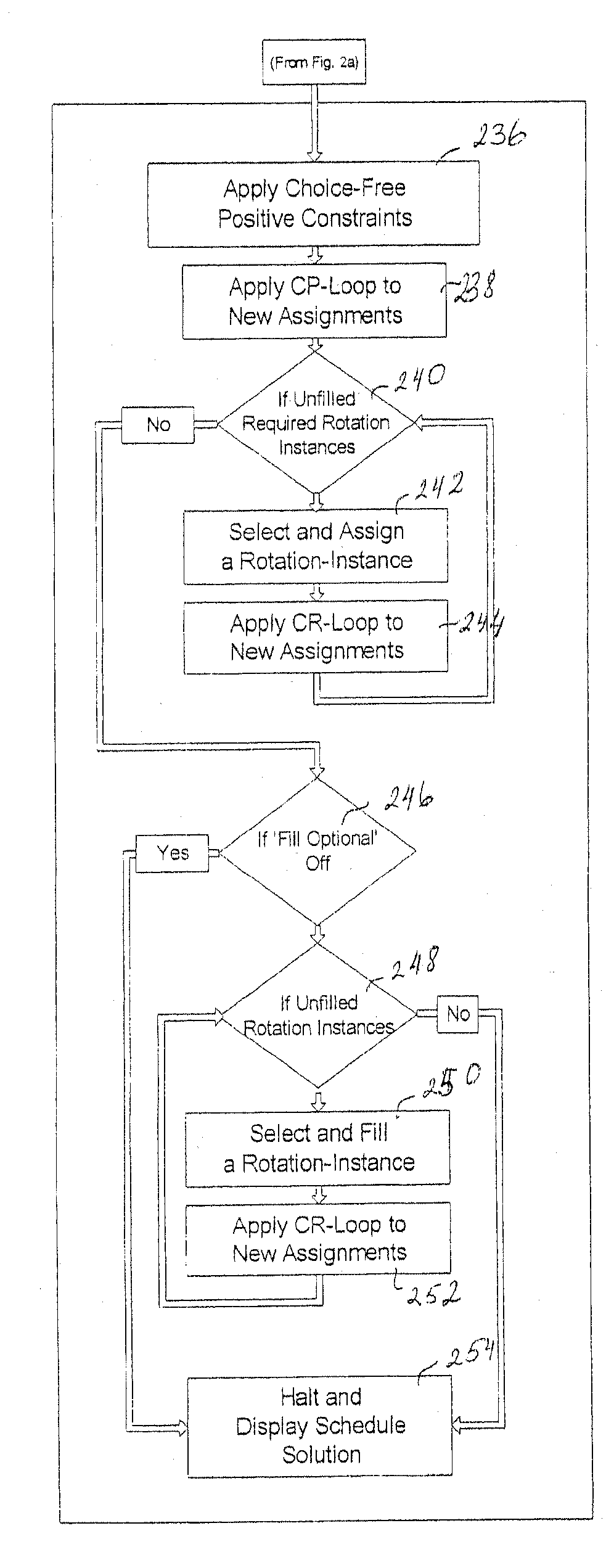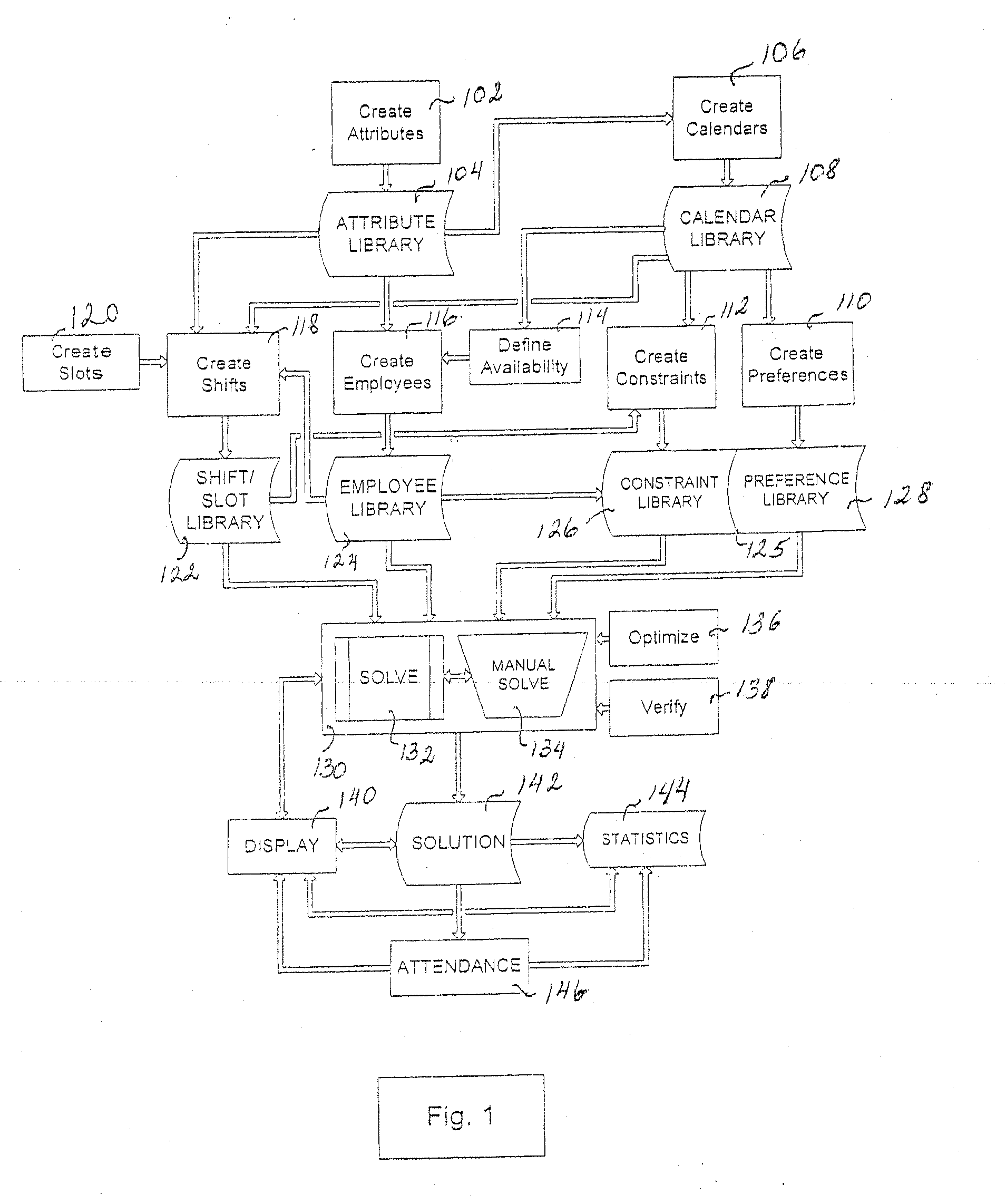Resource Scheduling and Monitoring
a resource scheduling and monitoring technology, applied in the field of resource scheduling and monitoring, can solve the problems of difficult mathematical problems, inability to find the best schedule using ‘pencil and paper’ methods, and physicians in training cannot legally work more than 100 hours per week, or more than 36 hours consecutively, and achieve the effect of high flexibility
- Summary
- Abstract
- Description
- Claims
- Application Information
AI Technical Summary
Benefits of technology
Problems solved by technology
Method used
Image
Examples
Embodiment Construction
[0021]A description of preferred embodiments of the invention follows.
[0022]The system and methods described herein can be used for solving general resource scheduling problems in a variety of environments. In the case of employee scheduling problems, employees are one of the resources, but the algorithm and system described here are highly general and can allocate or schedule many other kinds of resources. For example, in scheduling one or more hospital operating rooms, employees, surgical equipment, and operating rooms are all tightly constrained resources that need to be scheduled and coordinated. A typical constraint might be, “No heart surgeon is scheduled for a heart transplant ‘shift’ unless a suitable operating room, an anesthesiologist, and a cardiopulmonary bypass team work the same ‘shift’”.
[0023]Similarly, in a factory, skilled workers, pieces of machinery and sub-assemblies are resources to be scheduled for the purpose of assembling a prescribed number of cars or comput...
PUM
 Login to View More
Login to View More Abstract
Description
Claims
Application Information
 Login to View More
Login to View More - R&D
- Intellectual Property
- Life Sciences
- Materials
- Tech Scout
- Unparalleled Data Quality
- Higher Quality Content
- 60% Fewer Hallucinations
Browse by: Latest US Patents, China's latest patents, Technical Efficacy Thesaurus, Application Domain, Technology Topic, Popular Technical Reports.
© 2025 PatSnap. All rights reserved.Legal|Privacy policy|Modern Slavery Act Transparency Statement|Sitemap|About US| Contact US: help@patsnap.com



